Performance: Faster, Higher, Stronger
![{[downloads[language].preview]}](https://www.rolandberger.com/publications/publication_image/ta40_en_cover_3_download_preview.jpg)
Think:Act explores all factors related to performance for individuals and teams, with insights into metrics, AI, experimentation and authentic leadership.
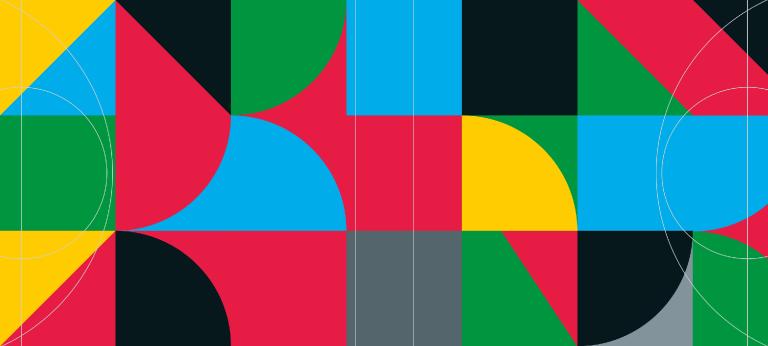


He helped Steve Jobs develop the iPod and iPhone. He followed that with his own startup Nest, sparking a smart home revolution before Google acquired it. Think:Act talks to serial entrepreneur Tony Fadell about the challenges of building things that people truly want.
Continually learning and hustling for the next opportunity seem to be second nature to Tony Fadell. From selling eggs door-to-door as a 9-year-old to designing custom computer chips in college and finally talking his way into legendary startup General Magic, Fadell always managed to follow up ideas for products and businesses with the next big thing. These days, the serial entrepreneur devotes his time to funding and mentoring startups with his Paris-based venture firm Build Collective.
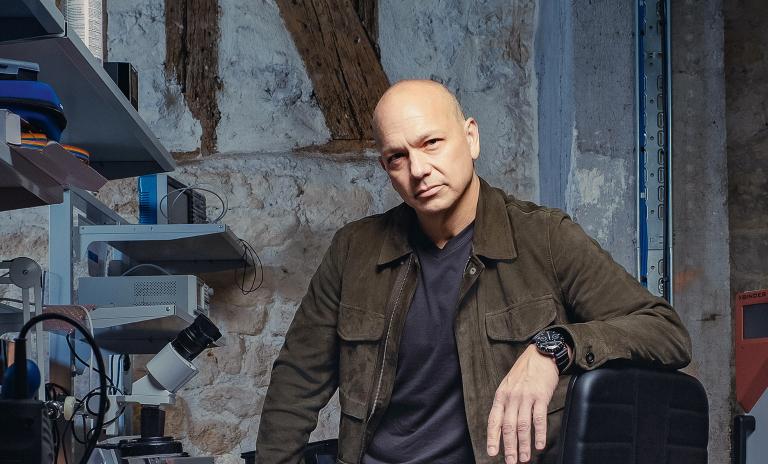
You argue that great products do a few things that give customers superpowers: They take on a life of their own and create new economies and even new ways of living. Aside from the iPhone, in whose development you were instrumental, what are some other examples of such powerful products?
Tony Fadell was the senior vice president of the iPod Division at Apple, where he oversaw all development for seven years. An active engineer and investor with over 300 patents to his name, he went on to found Nest Labs before it was acquired by Google and write the 2022 New York Times and Wall Street Journal bestseller, Build.
A new product has to solve a certain pain. At Nest, that pain point was heating and cooling your home. People didn't like the thermostats they had – they just bought whatever was available, or an installer told them what they should get. No one asked the customer what they wanted. At least in the Western world, a thermostat controls 50% of your home energy spend. If you're going to spend between $1,000 and $2,000 a year on energy, shouldn't you have a product that you understand, that can teach you about your consumption patterns and also looks nice on the wall? That product also gave you a superpower because it was easy to use from anywhere with your smartphone or computer.
What do you consider transformative technologies today? Do innovations like domestic service robots, the Metaverse and satellite broadband address pain points, or are they driven by other factors?
I think there are a lot of things that we're working on today that don't solve pain – or they only solve it for a very narrow set of people. But if we look at agricultural technology, new materials, clean energy, battery technology – those are real pain points. We have a climate crisis on our hands and we need transformative technology to help dig us out of the hole we're in. I'm not talking about convenience products that give us more time as individuals, but products that give us collectively more time as a species on this planet. We don't need home robots or the Metaverse to help solve our existential crises.
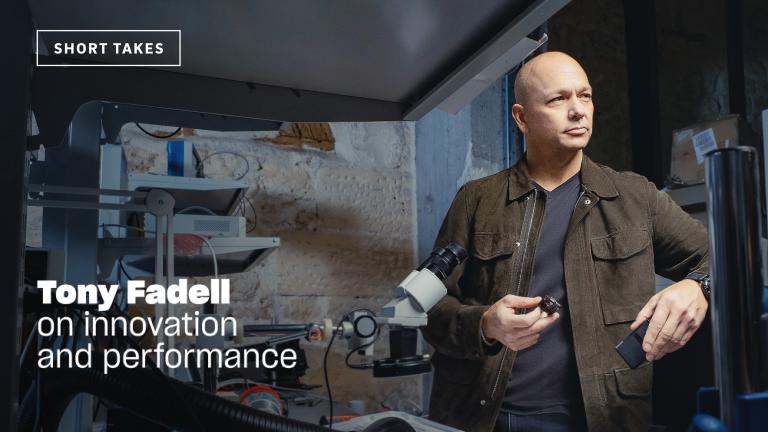
"You need to have a great vision, make sure society is ready for that vision, and the technologies available to realize that vision."
It took 10 years between your first idea for a smart thermostat to actually starting Nest. Does the spark for launching a product always take that long?
That was unusually long. One, I was busy at Apple, doing the iPod and iPhone. But the technology also didn't exist yet. If we look back at General Magic, which was developing the iPhone 15 years too early, I learned there that you have to make sure you've checked off three boxes: You need to have a great vision; you have to make sure society is ready for that vision; and you need to have the technologies available to realize that vision. At General Magic, we were a big failure because those things weren't aligned yet. We had the great vision – it was just too soon. The internet didn't even exist yet. I tried to do [Nest] in the early 2000s. But the technology didn't exist ... there was no WiFi yet, no smartphone until 2007. All of these things had to come together and you needed a society that wanted to do things like use a mobile phone as a remote. I was watching and waiting for that to happen, but none of the incumbents were embracing it because they were maintainers, not innovators. And I thought if we have these big, dumb, slow companies doing nothing, we're going to go in and shoot the gap.
How does a founder and entrepreneur who has an idea and is waiting to check those three boxes know if the time is right to keep going or to move on?
You should always be a little bit ahead of your time. Because then you make sure you're beating out the competition. There are lots of smart people around the world who have access to technology and money. But you can't be too early, either. The way to understand that is by making sure you have mentors around you, people who have done it before and who can see clearly what you're trying to do.
Every product needs a story. Why is storytelling so important and also needs to precede the product?
If you're an engineer, a scientist, researcher or a designer, you'll have all these bits and pieces of technology. That's how most people start. They see something and think: "Oh my God, if I put these things together, that seems like it's really cool." But that doesn't address the Why, it only addresses the What. You have to switch your mindset to why would a customer be compelled? You're not impressing the other geek next to you, you're trying to get people to buy or try things.
Great engineering feats don't make good stories?
You need what I call a press release. Let me give you an analogy. When you create a movie, you don't just go out and start shooting things. Instead, they do a treatment to understand the audience, the plot and subplots, the settings and the arc of the story. Only then do you write a script, create the movie. You know the saying the movie has lost the plot? Many technology companies do! I'm an investor in over 200 companies around the world and I see so many of them say: "Oh, we know what we're doing." But they don't ever have the plot. They need something equivalent to the movie treatment – and that's the press release. You write that at the very beginning as a compelling nonfiction story. Too many times, people build something and at the end they say, let's do marketing. But marketing is not congruent with the actual product that is delivered. You have to describe what you're imagining at the beginning and then deliver on that. People need to start off by envisioning what you're creating and use that as the fundamental guide.
Your former boss Steve Jobs was known as a master storyteller. Can you describe how he liked to employ a trick called the "virus of doubt"?
The virus of doubt is something that I created as a shorthand way of explaining how we can get people interested in the story you're telling. What you are creating should be a painkiller, so you want to very clearly reiterate to people the pain they're suffering today with the products they already have. Because over time, humans keep habituating away the problems they experience with a product or service. With the virus of doubt, you're shaking them awake. And then you say there is a new way to do it – you're tearing away their habituation. Why have a phone, a music player and a computer, when you can have it all in one device?
Nobody builds great things alone. What are some of the key insights you have learned about finding the right people to work with you or for you?
When you're starting out, you have to build a team. First you need to find your seed crystals. In chemistry, a seed crystal is a small molecule or element that allows other elements to come together and create some structure very quickly. A seed crystal is a person who has a deep network of talent. They have worked with good people and they're highly respected. You hire those seed crystals in whatever function and they're able to pull in more people who can then pull in many more people. It lets you achieve much faster and trusted growth. Second, you can't just hire all experienced people. You have to hire new grads who are coming into these careers for the first time because you want a multigenerational team. Why is that? Experienced people can teach the younger people. They usually like to be mentors, and the younger people like to work with older generations because they can learn something when they work with their heroes or experts. So it becomes very much of a relationship-based organization with a blended culture of learning and doing.
"Large organizations often don't want to take that risk of competing with their own successful product."
Is there some kind of a magic number for team size beyond which it gets complicated?
Organizations start to break down between 40 and 50 people. Not everyone can report to everyone and know everything going on. There are more breakpoints as you grow, and you need to level up your organization and your communications for that next phase. These are natural breakpoints that I've seen, time and time again, on every continent and in every type of business.
Do you see an effect on the quality or the speed of innovation as a company grows in size, let's say from a few hundred to several thousand people?
I've seen very successful companies with tens of thousands of people, but you have to break down those numbers into smaller teams of 120 or fewer than 300 people. They all have to be properly organized, properly communicated to, and you also need a dedicated team for innovation. Innovation is not going to happen spontaneously like it did when it was a smaller organization and you might have to innovate differently at different levels. So, you need to make sure you protect that at all times and be sure that you understand that you're going to have to fail. Most organizations that are growing really fast and think they're successful, or are indeed successful, have to remember to eat their own. They need to cannibalize what they do. Yet large organizations often don't want to take that risk of competing with their own successful product, and they stagnate. That will cause the innovators to leave for another company where innovation is actually happening. You have to embrace those true innovators and keep them happy and engaged.
Do people need to come back to the office to build things and spin great stories?
A lot of companies have processes that can be done remotely. But innovation happens when there's creative tension – and that only happens when people are together physically. There's some that can happen virtually, but you can't easily test or try things, find those serendipitous moments where two different ideas come together because people ran into each other in the hall.
So, if you're building a culture of innovation, you don't have to be in the office all the time – you need to have hands-on work together. Leaders who want people to come back to their organizations physically need to make it about FOMO for them – not tell them they need to be at work. The really innovative teams should want to be with those incredible people who they can learn from.
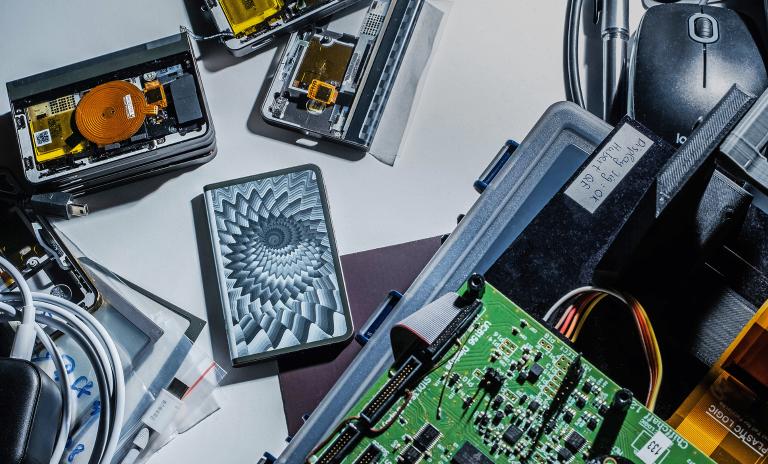
Your company Nest was acquired by Google in 2014 but it didn't work out, prompting you to leave just two years later. Why do mergers and acquisitions usually fail – despite all the money, talent, due diligence and integration teams?
Most acquisitions fail because of cultural mismatch. It's the way the teams work and communicate together. It's kind of like languages. We're putting this team in, and they speak French. But this team only speaks English. And they can't communicate, they have different ways of thinking. You have to understand what you're buying and make sure everybody sets expectations on what integration or lack of integration means. You have to get in there and work the culture, embrace the culture, and see if you're really buying them, or are you acquiring them just for the business or their technology?
You have since moved on and run an investment firm called Build Collective, which you describe as a "mentor with money." How does that differ from traditional venture capital firms?
We don't have limited partners. That's where all venture firms get their money from. VCs have a boss and they have to deliver returns. They have to make decisions that are best for their bosses, not necessarily what's best for the company. Maybe a startup needs to go on five more years and needs more money, but the fund needs to return the money now so it's forced to sell the company before it comes to fruition, or shut it down. The things we're doing take a long time so you need a different mindset.
What sectors or world-changing innovations are you focusing on?
I care about the things that are really hard to build, that are transformative, disruptive and help with our climate crisis, our societal needs and improve our health. At the end of the day, we work on the things that are really hard that most VCs won't do, because it's still somewhat of a science project. Companies are doing something very hard in those first, formative years before they have customers – they need people by their side who really believe in them and help them, not just to build something but also help them communicate in a big way to get the world to pay attention.
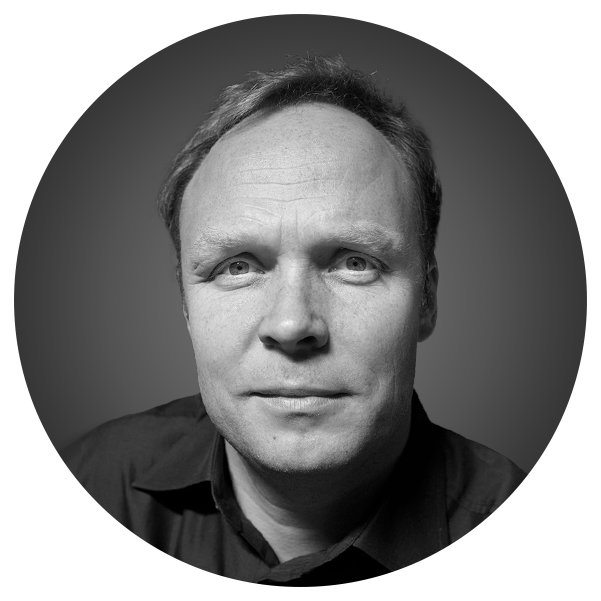
![{[downloads[language].preview]}](https://www.rolandberger.com/publications/publication_image/ta40_en_cover_3_download_preview.jpg)
Think:Act explores all factors related to performance for individuals and teams, with insights into metrics, AI, experimentation and authentic leadership.
